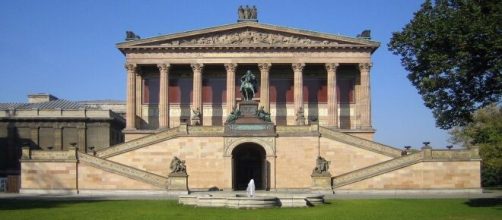As part of the exhibition Reflections on Painting, which opened at the Alte Nationalgalerie in Berlin on March 16, 2021, four unique works by Gerhard Richter are on exhibit. The painter created the Birkenau series in 2014 and reflected the depth and bitterness of the events that took place during the Holocaust. As ARTNews noted, the consortium of Berlin's Staatliche Museen Berlin's announced that the Richter Foundation plans to permanently donate 100 works by the Richter to the 20th Century Museum. It is currently under construction.
According to the Staatliche Museen zu Berlin press center, Gerhard Richter's works include presenting the artist's four paintings, prints of the four photographic originals from which he created, and a sizeable four-part mirror, which is an essential complement to his paintings.
The exhibition will run until October 3, 2021.
Richter's decision to permanently hand over the Birkenau series specifically was justified by the fact that the painter did not want these works ever to begin to be sold on the art market. So he decided to give them to the Prussian Cultural Heritage Foundation. This foundation oversees 27 different institutions in Germany, including museums. Four parts painting series Birkenau will later be part of a group of 100 works by Richter, which will then be exhibited in Berlin in a separate gallery of the 20th Century Museum on a permanent loan.
The exhibition Reflections on Painting will extend until October 3, 2021. After that, Richter's works will be exhibited at the Neue Nationalgalerie as part of his 100 pieces.
It will remain oriented until 2027 when the Museum of 20th Century Art is scheduled to open.
History of the Birkenau series
The paintings are based on four photographs that a prisoner secretly took in a concentration camp. They show the bodies of Jews murdered. The German visual artist was mainly concerned with how to portray one could even describe this 20th-century catastrophe.
Richter found a suitable way to recreate the images: he veiled his original photographs by painting them.
It is worth noting that Gerhard Richter repeatedly addressed the subject of the Holocaust in his works. The first drawings were made for the diary of Anne Frank in 1957. It was followed by a series of pictures painted in the 1960s.
During this period, the artist incorporated numerous photographs related to the Holocaust into his work.
The exhibition presentation describes the painter's technique to draw the Birkenau series: "Richter first transferred these photographs onto four canvases, creating four figurative images which he then gradually painted over. He first applied paint with brushes and then spread it, scoured it, or scraped it off again with squeegees. This process was then repeated multiple times."
Holocaust theme in artworks
It is complicated, and not many artists dared to portray the Holocaust on canvas. Many did not take on the work because no canvas could fully convey the horror and suffering people endured during the Holocaust.
As acting director of the Neue Nationalgalerie Joachim Jäger noted for Artnet news, “Birkenau will keep the memory of the Holocaust alive, combined with the question of how to deal with this exemplary crime against humanity, which must always be answered anew.”


